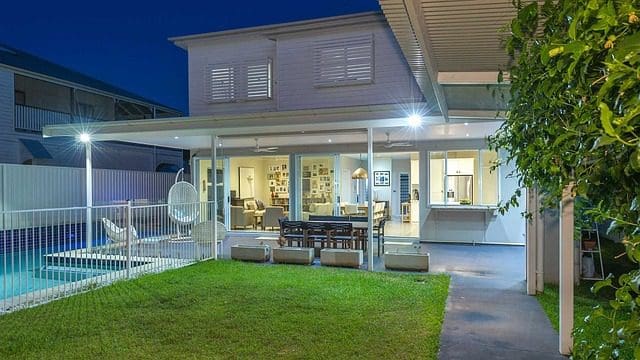The idea of sitting outside on a nice day can be very appealing. If you have a new home or are considering remodeling, adding a patio might be a great option. A deck can provide an excellent space for outdoor dining, relaxing, or simply enjoying the fresh air. If you’re thinking about adding a patio to your home, there are a few things you need to consider first.
Table of Contents
Factors To Consider When Building a Patio
Patios provide an outdoor living space for homeowners with easy access to water and electricity near the house. Pavers, bricks, or concrete can be used as materials for patios. Each has its benefits, such as pavers that can be moved if the layout needs to be changed, bricks providing a traditional look, and concrete being durable and easy to maintain. When selecting a patio, it is essential to consider the following:
Ease of Installation
How the patio will be installed will determine what materials can be used. Patios made with pavers are ideal for colder climates, while concrete is more suited to warmer temperatures where snow isn’t an issue. Patio maintenance usually requires little effort thanks to durable material choices and finishes that resist stains, mold, or mildew. For example, a stone finish on concrete won’t need much in terms of upkeep since it doesn’t require sealing or staining. On the other hand, brick patios often have mortar gaps requiring sealing at least once a year. When building a deck, consider it easy to install composite decking so your backyard patio is ready when you are. However, it’s best to leave it to the experts so it’s done correctly and will last. Many homeowners try to install patios themselves and then have issues that need to be fixed, such as drainage problems.
Size of Patio
A patio can make your yard feel larger, but it takes up space. Before starting the project, measure how much space you have and know what size is ideal for your needs. At least three feet of space should be left between the area and anything surrounding it, such as sprinklers or bushes, so water doesn’t damage the patio and plants don’t infringe on it. If added seating is required, allow more room than if all needed is tablespace. For example, add at least seven feet around a large dining table with eight chairs. Smaller tables require less than half that amount of room. Be sure to keep in mind walkways and porch entrances.
Patio Material
There are various materials for patios, each with its advantages. Some common choices are pavers which can be moved if the layout changes, bricks that give a traditional look, and concrete, durable and easy to maintain. Each has its benefits. Pavers can be moved if you ever want to change the layout, bricks offer a traditional look, and concrete is durable and easy to maintain. If you choose wood, seal it every few years to protect it from the weather. Before selecting a material, consider your needs, including how much space is available in the yard for the patio, what type of upkeep will be required, and construction cost.
Layout of Patio
Before building your patio, you need to map out where it will go. The patio layout can be a simple square or rectangle, or you can get creative with curves and designs. It should be easily accessible from walkways or entrances without infringing on plants or sprinklers, so water doesn’t damage the patio. Next, measure the indoor area you wish to have covered by the deck to determine its size needed in outdoor space. If you want to add plants or other features, be sure to leave enough space. Finally, when designing the layout, think about where you will put furniture and how people will move around the area.

Location of Patio
Another thing to consider is where to put your patio. If you want to use it for dining, the best spot is close to the house so you can quickly bring food out and avoid having to run back and forth. If you’re using it for relaxing, a spot in the sun with a nice view can be ideal. If you have children or pets, make sure the patio is enclosed or has a fence around it to keep them from running into the street. You might also want it in a sunny spot for maximum enjoyment or in a shady area to escape the heat. Keep in mind that patios should be located near the house for easy access to water and electricity.
Accessibility
When designing your patio, keep in mind who will be using it. If you have elderly or disabled relatives, make sure the patio is accessible and has a safety railing. Decks are typically made of durable materials, but they can still be damaged if not cared for properly. Also, be sure that the location will allow easy access to patio care products such as pads, sealers, and cleaners. You may also want to consider what kind of maintenance will be required. If you choose pavers, bricks, or patio awning they’ll need to be sealed regularly. Make sure you can reach all areas of your patio easily for cleaning.
Product Selection
You want your patio to be beautiful, but you also need it to be functional. Sometimes adding too many features can result in an unappealing design, so consider how much space needs to be dedicated for function vs. style with careful measurements before beginning the project. Hence, before starting your project, take the time to research what’s available. Not all patios are created equal. You might want a traditional patio or something with a tropical feel. There are also many different colors and textures to choose from. Be sure to select a design that will complement your home’s style.
Before deciding on a construction method or material for your patio, check out various options at retail stores. You can find different styles and prices, so you know what’s available and budget-friendly. You can also get ideas for what will work best for your home and yard. Building a patio is a significant investment that can add value to a home by taking these factors into account. One can have an enjoyable outdoor living space that will last for years to come.
Featured Image by Richard Mcall from Pixabay




